
This is a true method for developing the amazing Reiki healing ability to cure any disease in just 5 days of training.
Kaiji Tomita was a Japanese man living in Osaka in Japan in the Taisho era (1912-1926).
Kaiji Tomita
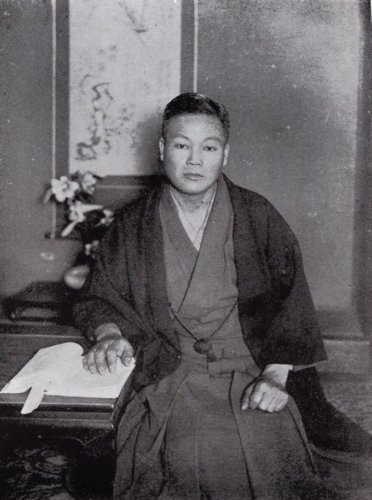
Tomita learned the original Reiki directly from Mikao Usui, the founder of Reiki at the Usui Reiki Ryoho Gakkai (Usui Reiki Therapy Society).
If you are interested in the details of the amazing life of Mikao Usui, the founder of Reiki, please click the link below.
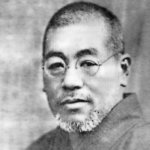
After that, in order to spread Reiki in Japan, Tomita opened his clinic in front of Ichioka Junior High School (the current Ichioka High School) in Minato-ku, Osaka, where he established the “Tomita Hand Healing.”
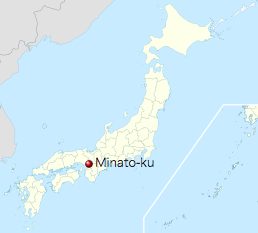
Source – Own work
Amazingly, Tomita gained a miraculous healing power to cure all kinds of diseases in only 10 hours of Reiki training.
If you are interested in the episode of Kaiji Tomita’s Reiki treatment shortly after he learned Reiki, please click the link below.
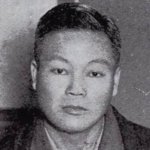
According to Tomita, such power is inherent in all humans, and anyone can acquire it if they train in the right procedures.
Unfortunately, Usui, the founder of Reiki, did not leave any writings on his own Reiki therapy, so it is not possible to know the details of how the Usui style Reiki therapy was actually practiced now.
However, Tomita described in considerable detail how to develop his Reiki healing abilities in his book “Reiki to Jinjutsu: Tomita-Style Hand Therapy” which was published in 1933.
In this post, I would like to introduce Kaiji Tomita’s method for developing amazing Reiki healing ability to cure any disease in just 5 days of training.
Differences between Western Reiki and the Original Japanese Reiki
In Western Reiki, there are 12 known hand positions that designate the parts of the body where the practitioner should put their hands.
However, those 12 hand positions are defined completely independently of the location of the affected part of the sick person’s body, the location of the source of the disease, and the distribution of Reiki radiation in the practitioner’s palm.
On the other hand, in the traditional original Japanese Reiki therapy of Mikao Usui, the founder of Reiki, and his direct disciples such as Chujiro Hayashi and Kaiji Tomita, the practitioner decides on the position and shape of the hand and performs the Reiki treatment based on the unique Reiki sensation felt in the palm of the hand when the practitioner touches the sick person’s affected area (Byoukan, corresponding to Byousen in Jikiden Reiki, also called Hibiki), which differs fundamentally from Western Reiki.
Unfortunately, Usui and Chujiro Hayashi left few documents detailing their Reiki techniques.
However, Tomita left behind a detailed and systematic description of the original reiki therapy techniques he learned directly from Usui.
Tomita described in considerable detail how to develop his Reiki healing abilities in his book “Reiki to Jinjutsu: Tomita-Style Hand Therapy.” which was published in 1933.
The cover of Tomita’s book “Reiki to Jinjutsu: Tomita-Style Hand Therapy.”
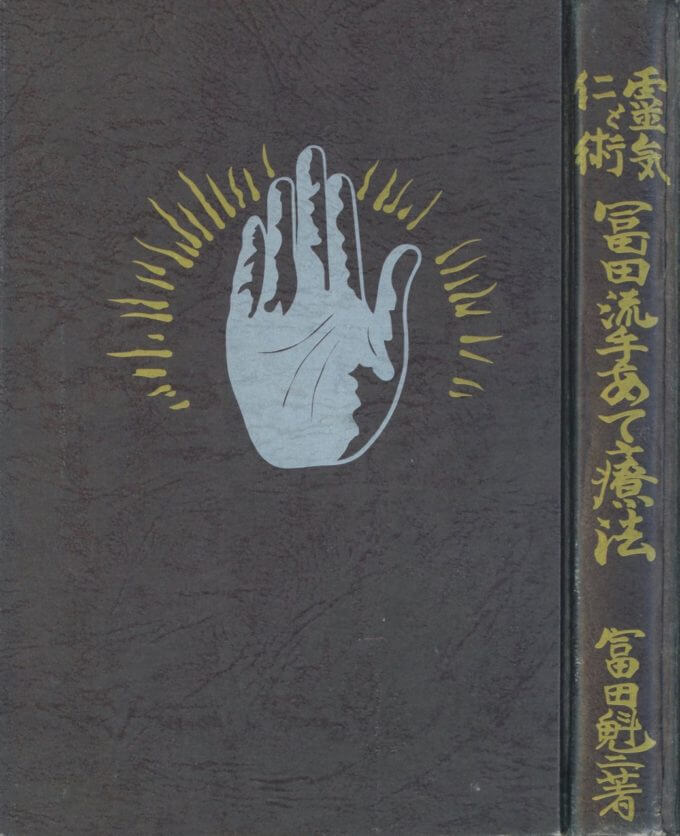
According to Tomita, the amount of Reiki emitted from the palm of the hand depends greatly on the practitioner’s mental state.
The practitioner can gather Reiki in the palm of the hand by unifying the spirit.
Conversely, if the practitioner’s mind is upset and disturbed, the practitioner has difficulty radiating Reiki from the palm of his or her hand, and it often disappears.
This relationship between Reiki and spirit is evident from the fact that the founder of Reiki, Mr. Usui himself discovered Reiki shortly after reaching the state of enlightenment through Zen practice on Kurama Mountain.
If the practitioner can feel Byoukan of the sick person’s affected area in the palm of the hand, then by concentrating on the Byoukan felt in the palm of the hand, the practitioner can naturally unify his or her mind and, as a result, collect more Reiki in the palm of the hand.
Therefore, in the original Japanese Reiki technique, it is of utmost importance that the practitioner is able to feel the Byoukan of the affected area in the palm of the hand.
And by focusing on the Byoukan emitted by the affected area, the shape and distribution of Reiki radiating from the practitioner’s palm will also naturally tune into the shape of the affected area according to the Byoukan.
However, in order to achieve a high therapeutic effect, the practitioner must change the position and shape of the palm of the hand appropriately according to the shape and size of the sick person’s affected area.
Five Methods of Radiating Reiki in the Palm of the Hand
In Tomita’s Reiki therapy, there are five methods of radiating Reiki in the palm of the hand when the practitioner is treating Reiki, as follows.
Fig. 11 below shows the distribution of Reiki in the palm of the hand when the practitioner concentrates Reiki in a linear pattern centered on the middle finger.
Figure 11. The image showing the distribution of Reiki in the palm of the hand as the practitioner radiates Reiki to the affected area in a linear shape.
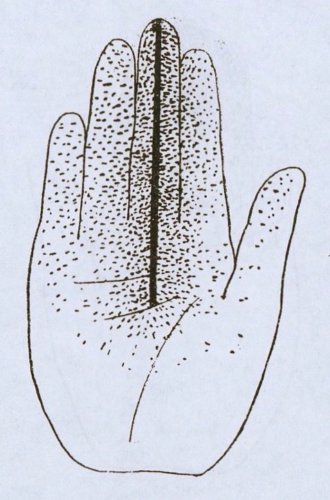
In this case, Reiki is radiated most strongly in a line along the center of the middle finger, and the index and ring fingers radiate Reiki in concert with the middle finger’s Reiki radiation, with the little finger and thumb serving to assist in this radiation.
This method of radiating Reiki in a linear fashion across the entire length of the middle fingers is advantageous for the treatment of linearly affected areas, such as neuralgia.
Another method is for the practitioner to focus the Reiki radiation around the third segment of the middle finger, as shown in Fig.12 below.
Figure 12. The image showing the distribution of Reiki in the palm of the hand as the practitioner radiates Reiki over the entire palm of the hand to treat or diagnose a large area of the affected area.
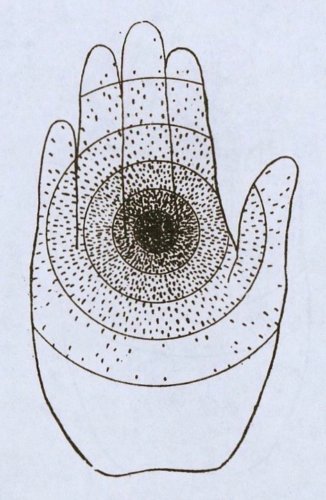
This method of radiating Reiki is advantageous when the practitioner is making a Reiki diagnosis or treating a large area of the affected area.
Furthermore, the method of the practitioner radiating Reiki around the second segment of the middle finger, as shown in Figure 13 below, is advantageous for the treatment of ordinary affected areas.
Figure 13. The image showing the distribution of Reiki in the palm of the hand as the practitioner radiates Reiki during an ordinary Reiki treatment.
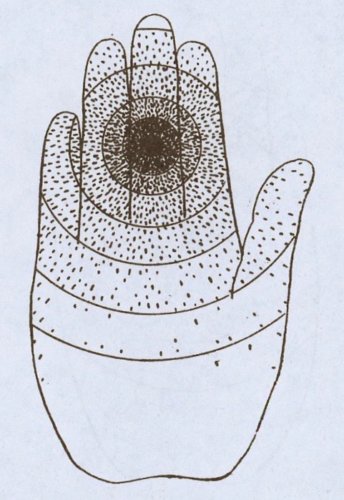
In addition, as shown in Figure 14 below, the practitioner can move the center of the Reiki radiation to the first segment of the middle finger and focus the Reiki on a small area at the tip of the palm of the hand.
Figure 14. The image of the distribution of Reiki in the palm of the hand as the practitioner radiates Reiki when treating a localized affected area.
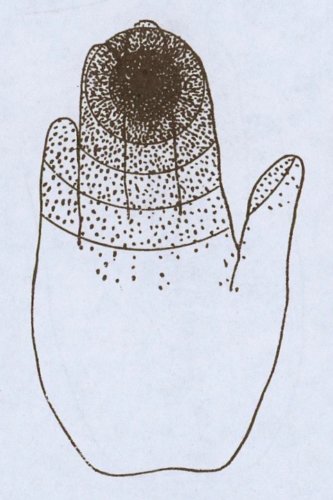
According to Tomita, this method of radiating Reiki is suitable for treating localized affected areas due to the strong radiating power of Reiki, but it is only used during special treatments, as it is difficult for the practitioner to remain in such a radiant state for long periods of time.
Fig.15 below shows the shape of the palm of the hand as the practitioner applies one palm around the affected area and radiates Reiki from the surrounding area to the affected area.
Figure 15. The image showing the distribution of Reiki in the palm of the hand as the practitioner treats the affected area with the palm open.
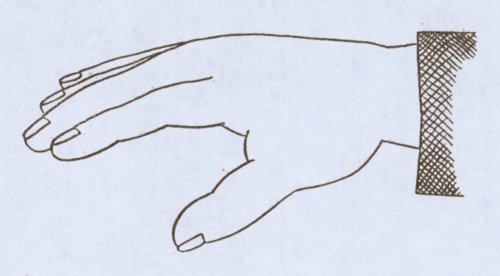
According to Tomita, this method of radiating Reiki is suitable for treating affected areas with curved surfaces such as the abdomen, neck, and tonsils, etc.
According to Tomita, regardless of which of the above five methods is used, the practitioner must match the center point of the area of the palm where Reiki is to be emitted, the center point of the distribution of Reiki radiation, and the center point of the affected area to be treated.
In other words, the practitioner should keep in mind that during Reiki treatment, the center of the physical area of the palm of the hand from which Reiki should be radiated, the center of the spiritual distribution of Reiki that should be sent to the palm of the hand, and the center of the affected area to be treated should coincide with three points.
If the affected area to be treated has a linear shape, the practitioner should ensure that the three central axes of the Reiki treatment coincide with the central axis of the physical middle finger that should radiate Reiki in the palm of the hand, the central axis of the spiritual linear distribution of Reiki to be sent to said palm, and the central axis of the linear affected area.
For example, when treating a linear affected area, the practitioner places the palm of the hand on the affected area so that the central axis of the middle finger is aligned with the linear affected area, and Reiki is radiated from the palm of the hand so that Reiki is distributed along the central axis of the middle finger.
In this case, the other four fingers serve to assist in the Reiki radiation around the axis of the middle finger.
The Relationship Between Reiki and Mental and Physical Harmony
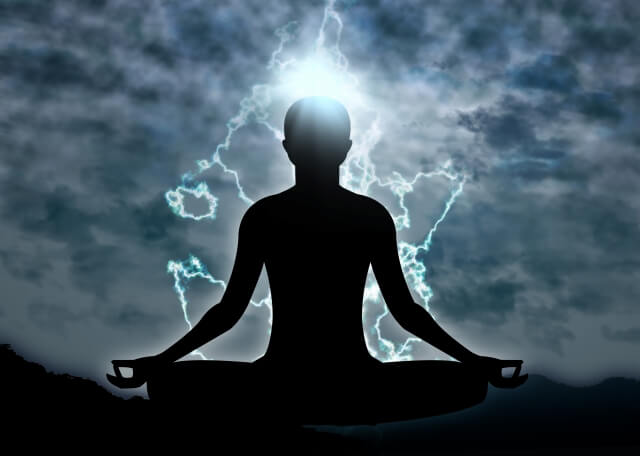
The important point here is that during Reiki treatment, it is not enough for the practitioner to match the center of the affected area to be treated with the center of the palm of the hand, but it is further necessary that these centers also match the center of the distribution of the Reiki to be radiated, i.e., the center of the practitioner’s consciousness (mind).
In other words, it is not enough that the center point of the practitioner’s palm matches the center point of the sick person’s affected area (physical match), but these physical center points must also match the center point of the practitioner’s Reiki radiation distribution, i.e., the center of the practitioner’s consciousness (mind), as well (mental match).
For example, when you try to hold something with one hand, you won’t be able to hold that object well with one hand unless you take into account the balance between the center of gravity of that object and the center of your palm.
But at the same time, you should realize that you are simultaneously aligning your consciousness with both the center of gravity of the object and the center of the palm of your hand.
In fact, in Tomita’s own experience of treating many sick people with Reiki, he once wondered why, in spite of the fact that he placed his hand on the affected area in exactly the same way, there were two kinds of cases where the treatment worked and the other way around: one where it did not.
Tomita found that the difference was due to the balance between the two physical centers of the practitioner’s palm and the sick person’s affected area and the mental center of the practitioner’s consciousness (mind), as described above.
And it is this balance between body and mind that has a decisive influence on the success or failure of Reiki treatment.
Thus, in Reiki treatment, the practitioner must ensure that the three centers of the practitioner’s palm, the sick person’s affected area, and the practitioner’s spirit are matched, otherwise, the practitioner will not be able to achieve a satisfactory therapeutic effect.
Thus, while Western Reiki, which adheres only to formal forms, produces only a small healing effect, such as the placebo effect, the original Japanese Reiki, which incorporates the harmony between the spirit and the body, produces overwhelming therapeutic effects, as evidenced by Tomita’s astonishing treatment results.
This is the most fundamental principle in Kaiji Tomita’s Reiki therapy.
(Continue to “How to Completely Master Amazing Reiki Therapy in Just 5 Days of Training” [Part 7])
Reference
- Kaiji Tomita (February 1933). “Reiki To Jinjutsu: Tomita-Style Hand Therapy.”
Published on November 15, 2020
Written by OTAKUPAPA

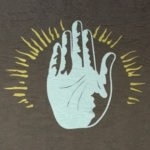
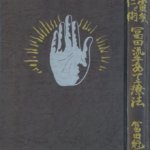

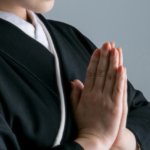
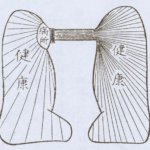

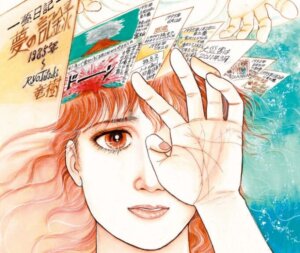
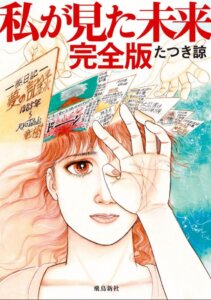
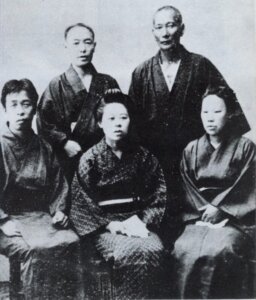


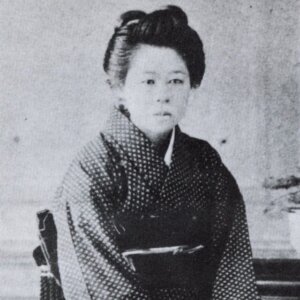
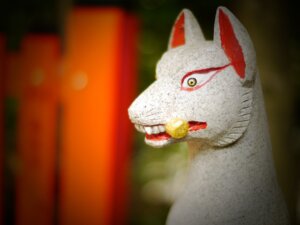

Comments